Honeywell 2003 Annual Report Download - page 360
Download and view the complete annual report
Please find page 360 of the 2003 Honeywell annual report below. You can navigate through the pages in the report by either clicking on the pages listed below, or by using the keyword search tool below to find specific information within the annual report.-
 1
1 -
 2
2 -
 3
3 -
 4
4 -
 5
5 -
 6
6 -
 7
7 -
 8
8 -
 9
9 -
 10
10 -
 11
11 -
 12
12 -
 13
13 -
 14
14 -
 15
15 -
 16
16 -
 17
17 -
 18
18 -
 19
19 -
 20
20 -
 21
21 -
 22
22 -
 23
23 -
 24
24 -
 25
25 -
 26
26 -
 27
27 -
 28
28 -
 29
29 -
 30
30 -
 31
31 -
 32
32 -
 33
33 -
 34
34 -
 35
35 -
 36
36 -
 37
37 -
 38
38 -
 39
39 -
 40
40 -
 41
41 -
 42
42 -
 43
43 -
 44
44 -
 45
45 -
 46
46 -
 47
47 -
 48
48 -
 49
49 -
 50
50 -
 51
51 -
 52
52 -
 53
53 -
 54
54 -
 55
55 -
 56
56 -
 57
57 -
 58
58 -
 59
59 -
 60
60 -
 61
61 -
 62
62 -
 63
63 -
 64
64 -
 65
65 -
 66
66 -
 67
67 -
 68
68 -
 69
69 -
 70
70 -
 71
71 -
 72
72 -
 73
73 -
 74
74 -
 75
75 -
 76
76 -
 77
77 -
 78
78 -
 79
79 -
 80
80 -
 81
81 -
 82
82 -
 83
83 -
 84
84 -
 85
85 -
 86
86 -
 87
87 -
 88
88 -
 89
89 -
 90
90 -
 91
91 -
 92
92 -
 93
93 -
 94
94 -
 95
95 -
 96
96 -
 97
97 -
 98
98 -
 99
99 -
 100
100 -
 101
101 -
 102
102 -
 103
103 -
 104
104 -
 105
105 -
 106
106 -
 107
107 -
 108
108 -
 109
109 -
 110
110 -
 111
111 -
 112
112 -
 113
113 -
 114
114 -
 115
115 -
 116
116 -
 117
117 -
 118
118 -
 119
119 -
 120
120 -
 121
121 -
 122
122 -
 123
123 -
 124
124 -
 125
125 -
 126
126 -
 127
127 -
 128
128 -
 129
129 -
 130
130 -
 131
131 -
 132
132 -
 133
133 -
 134
134 -
 135
135 -
 136
136 -
 137
137 -
 138
138 -
 139
139 -
 140
140 -
 141
141 -
 142
142 -
 143
143 -
 144
144 -
 145
145 -
 146
146 -
 147
147 -
 148
148 -
 149
149 -
 150
150 -
 151
151 -
 152
152 -
 153
153 -
 154
154 -
 155
155 -
 156
156 -
 157
157 -
 158
158 -
 159
159 -
 160
160 -
 161
161 -
 162
162 -
 163
163 -
 164
164 -
 165
165 -
 166
166 -
 167
167 -
 168
168 -
 169
169 -
 170
170 -
 171
171 -
 172
172 -
 173
173 -
 174
174 -
 175
175 -
 176
176 -
 177
177 -
 178
178 -
 179
179 -
 180
180 -
 181
181 -
 182
182 -
 183
183 -
 184
184 -
 185
185 -
 186
186 -
 187
187 -
 188
188 -
 189
189 -
 190
190 -
 191
191 -
 192
192 -
 193
193 -
 194
194 -
 195
195 -
 196
196 -
 197
197 -
 198
198 -
 199
199 -
 200
200 -
 201
201 -
 202
202 -
 203
203 -
 204
204 -
 205
205 -
 206
206 -
 207
207 -
 208
208 -
 209
209 -
 210
210 -
 211
211 -
 212
212 -
 213
213 -
 214
214 -
 215
215 -
 216
216 -
 217
217 -
 218
218 -
 219
219 -
 220
220 -
 221
221 -
 222
222 -
 223
223 -
 224
224 -
 225
225 -
 226
226 -
 227
227 -
 228
228 -
 229
229 -
 230
230 -
 231
231 -
 232
232 -
 233
233 -
 234
234 -
 235
235 -
 236
236 -
 237
237 -
 238
238 -
 239
239 -
 240
240 -
 241
241 -
 242
242 -
 243
243 -
 244
244 -
 245
245 -
 246
246 -
 247
247 -
 248
248 -
 249
249 -
 250
250 -
 251
251 -
 252
252 -
 253
253 -
 254
254 -
 255
255 -
 256
256 -
 257
257 -
 258
258 -
 259
259 -
 260
260 -
 261
261 -
 262
262 -
 263
263 -
 264
264 -
 265
265 -
 266
266 -
 267
267 -
 268
268 -
 269
269 -
 270
270 -
 271
271 -
 272
272 -
 273
273 -
 274
274 -
 275
275 -
 276
276 -
 277
277 -
 278
278 -
 279
279 -
 280
280 -
 281
281 -
 282
282 -
 283
283 -
 284
284 -
 285
285 -
 286
286 -
 287
287 -
 288
288 -
 289
289 -
 290
290 -
 291
291 -
 292
292 -
 293
293 -
 294
294 -
 295
295 -
 296
296 -
 297
297 -
 298
298 -
 299
299 -
 300
300 -
 301
301 -
 302
302 -
 303
303 -
 304
304 -
 305
305 -
 306
306 -
 307
307 -
 308
308 -
 309
309 -
 310
310 -
 311
311 -
 312
312 -
 313
313 -
 314
314 -
 315
315 -
 316
316 -
 317
317 -
 318
318 -
 319
319 -
 320
320 -
 321
321 -
 322
322 -
 323
323 -
 324
324 -
 325
325 -
 326
326 -
 327
327 -
 328
328 -
 329
329 -
 330
330 -
 331
331 -
 332
332 -
 333
333 -
 334
334 -
 335
335 -
 336
336 -
 337
337 -
 338
338 -
 339
339 -
 340
340 -
 341
341 -
 342
342 -
 343
343 -
 344
344 -
 345
345 -
 346
346 -
 347
347 -
 348
348 -
 349
349 -
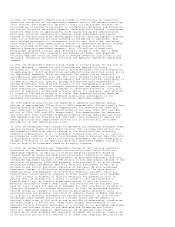 350
350 -
 351
351 -
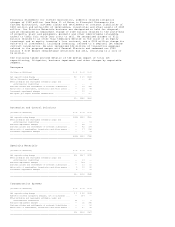 352
352 -
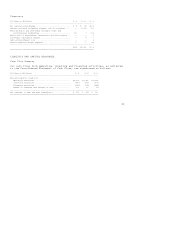 353
353 -
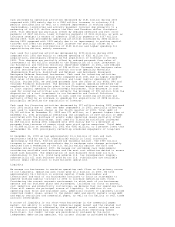 354
354 -
 355
355 -
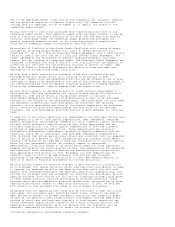 356
356 -
 357
357 -
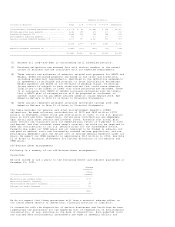 358
358 -
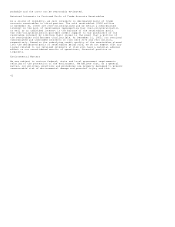 359
359 -
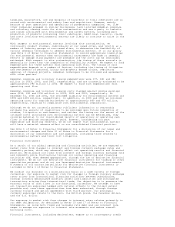 360
360 -
 361
361 -
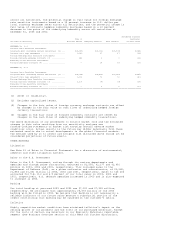 362
362 -
 363
363 -
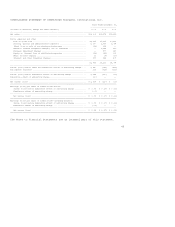 364
364 -
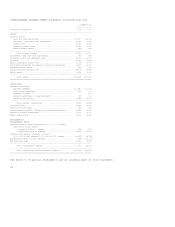 365
365 -
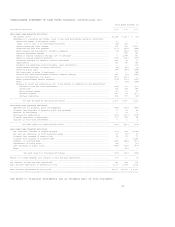 366
366 -
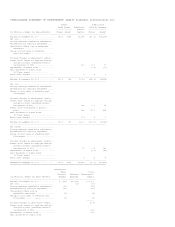 367
367 -
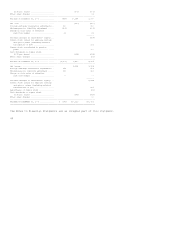 368
368 -
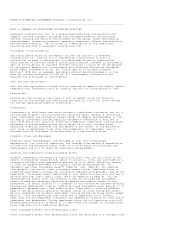 369
369 -
 370
370 -
 371
371 -
 372
372 -
 373
373 -
 374
374 -
 375
375 -
 376
376 -
 377
377 -
 378
378 -
 379
379 -
 380
380 -
 381
381 -
 382
382 -
 383
383 -
 384
384 -
 385
385 -
 386
386 -
 387
387 -
 388
388 -
 389
389 -
 390
390 -
 391
391 -
 392
392 -
 393
393 -
 394
394 -
 395
395 -
 396
396 -
 397
397 -
 398
398 -
 399
399 -
 400
400 -
 401
401 -
 402
402 -
 403
403 -
 404
404 -
 405
405 -
 406
406 -
 407
407 -
 408
408 -
 409
409 -
 410
410 -
 411
411 -
 412
412 -
 413
413 -
 414
414 -
 415
415 -
 416
416 -
 417
417 -
 418
418 -
 419
419 -
 420
420 -
 421
421 -
 422
422 -
 423
423 -
 424
424 -
 425
425 -
 426
426 -
 427
427 -
 428
428 -
 429
429 -
 430
430 -
 431
431 -
 432
432 -
 433
433 -
 434
434 -
 435
435 -
 436
436 -
 437
437 -
 438
438 -
 439
439 -
 440
440 -
 441
441 -
 442
442 -
 443
443 -
 444
444
 |
 |
handling, manufacture, use and disposal of hazardous or toxic substances are in
accord with environmental and safety laws and regulations. However, mainly
because of past operations and operations of predecessor companies, we, like
other companies engaged in similar businesses, have incurred remedial response
and voluntary cleanup costs for site contamination and are a party to lawsuits
and claims associated with environmental and safety matters, including past
production of products containing toxic substances. Additional lawsuits, claims
and costs involving environmental matters are likely to continue to arise in the
future.
With respect to environmental matters involving site contamination, we
continually conduct studies, individually at our owned sites, and jointly as a
member of industry groups at non-owned sites, to determine the feasibility of
various remedial techniques to address environmental matters. It is our policy
(see Note 1 of Notes to Financial Statements) to record appropriate liabilities
for environmental matters when environmental assessments are made or remedial
efforts or damage claim payments are probable and the costs can be reasonably
estimated. With respect to site contamination, the timing of these accruals is
generally no later than the completion of feasibility studies. We expect to fund
expenditures for these matters from operating cash flow. The timing of cash
expenditures depends on a number of factors, including the timing of litigation
and settlements of personal injury and property damage claims, regulatory
approval of cleanup projects, remedial techniques to be utilized and agreements
with other parties.
Remedial response and voluntary cleanup expenditures were $77, $81 and $82
million in 2003, 2002, and 2001, respectively, and are currently estimated to be
approximately $90 million in 2004. We expect to fund such expenditures from
operating cash flow.
Remedial response and voluntary cleanup costs charged against pretax earnings
were $235, $60 and $152 million in 2003, 2002 and 2001, respectively. At
December 31, 2003 and 2002, the recorded liability for environmental matters was
$593 and $435 million, respectively. In addition, in 2003 and 2002 we incurred
operating costs for ongoing businesses of approximately $80 and $75 million,
respectively, relating to compliance with environmental regulations.
Although we do not currently possess sufficient information to reasonably
estimate the amounts of liabilities to be recorded upon future completion of
studies, litigation or settlements, and neither the timing nor the amount of the
ultimate costs associated with environmental matters can be determined, they
could be material to our consolidated results of operations or operating cash
flows in the periods recognized or paid. However, considering our past
experience and existing reserves, we do not expect that environmental matters
will have a material adverse effect on our consolidated financial position.
See Note 3 of Notes to Financial Statements for a discussion of our legal and
environmental charges and Note 21 of Notes to Financial Statements for a
discussion of our commitments and contingencies, including those related to
environmental matters and toxic tort litigation.
Financial Instruments
As a result of our global operating and financing activities, we are exposed to
market risks from changes in interest and foreign currency exchange rates and
commodity prices, which may adversely affect our operating results and financial
position. We minimize our risks from interest and foreign currency exchange rate
and commodity price fluctuations through our normal operating and financing
activities and, when deemed appropriate, through the use of derivative financial
instruments. We do not use derivative financial instruments for trading or other
speculative purposes and do not use leveraged derivative financial instruments.
A summary of our accounting policies for derivative financial instruments is
included in Note 1 of Notes to Financial Statements.
We conduct our business on a multinational basis in a wide variety of foreign
currencies. Our exposure to market risk for changes in foreign currency exchange
rates arises from international financing activities between subsidiaries,
foreign currency denominated monetary assets and liabilities and anticipated
transactions arising from international trade. Our objective is to preserve the
economic value of cash flows in non-functional currencies. We attempt to have
all transaction exposures hedged with natural offsets to the fullest extent
possible and, once these opportunities have been exhausted, through foreign
currency forward and option agreements with third parties. Our principal
currency exposures relate to the Euro, the British pound, the Canadian dollar,
and the U.S. dollar.
Our exposure to market risk from changes in interest rates relates primarily to
our debt obligations. As described in Notes 15 and 17 of Notes to Financial
Statements, we issue both fixed and variable rate debt and use interest rate
swaps to manage our exposure to interest rate movements and reduce overall
borrowing costs.
Financial instruments, including derivatives, expose us to counterparty credit
